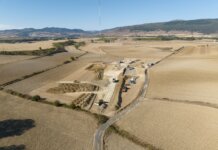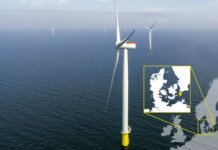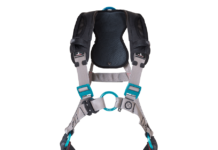A DNV GL-led project is proving that wind-powered water injection for the oil and gas industry is technically feasible and offers a cost-competitive alternative to conventional water-injection solutions.
For the past year, participants from both the renewable and oil and gas industries have worked together in the DNV GL-led WIN WIN joint industry project (JIP) to develop the concept of using floating wind turbines to power a water-injection system and assess its technical and commercial feasibility. Technical and operational aspects, as well as costs, have been assessed. The JIP partners include ExxonMobil, ENI Norge, Nexen Petroleum UK Ltd., Statoil, VNG Norge, PG Flow Solutions and ORE Catapult.
According to DNV GL, no major challenges have been identified through the JIP’s study. Analyses of system performance examining site-specific cases from JIP partners have shown that WIN WIN is able to meet the operator’s key performance requirements such as injection volume targets, as well as reliability and minimized downtime.
“For the first time, we can now see renewable energy as a large-scale source of power to offshore oil and gas operations,” says Remi Eriksen, group president and CEO of DNV GL. “By utilizing the recent developments of floating offshore wind turbines, this concept can offer a clean, reliable and cost-effective alternative for powering water injection in offshore locations.”
The costs for wind-powered water injection have been compared with a conventional alternative wherein water is injected via a flow line from the host platform.
Though the WIN WIN technology has higher operational expenditures compared to a conventional alternative, the significantly lower capital expenditure means that it compares favorably over the long term, explains DNV GL. Therefore, WIN WIN is a commercially competitive alternative in a range of cases, particularly when host platform capacity is limited or injection wells are located far away.
“For the specific example case assessed in the report, we are looking at a potential cost saving of approximately 20 percent compared to a conventional solution. This will, of course, vary greatly between cases,” says Johan Sandberg, project sponsor and segment leader of floating wind turbines at DNV GL.
“To develop the concept further, a next step would be to test critical subsystems in a small scale physical set-up,” Sandberg continues. “The key objective would be to gain assurance that the components integrated in this configuration will offer satisfactory performance over time with a variable power input. A potential phase two of the JIP is being explored with some of the current JIP partners,“ he adds.
The use-case system is located in the North Sea, 30 km from the production host, 30 km from shore and 200 meters deep in the water.
The reservoir consists of two injection wells with normal injectivity and a target injection rate of 44,000 barrels of water per day. A 6 MW wind turbine is mounted on a spar foundation, with 2 x 2 MW injection pumps, capable of a maximum of 80,000 barrels of water per day. The process equipment is located top side, and water treatment includes filtration and chemical injection with chlorine.




